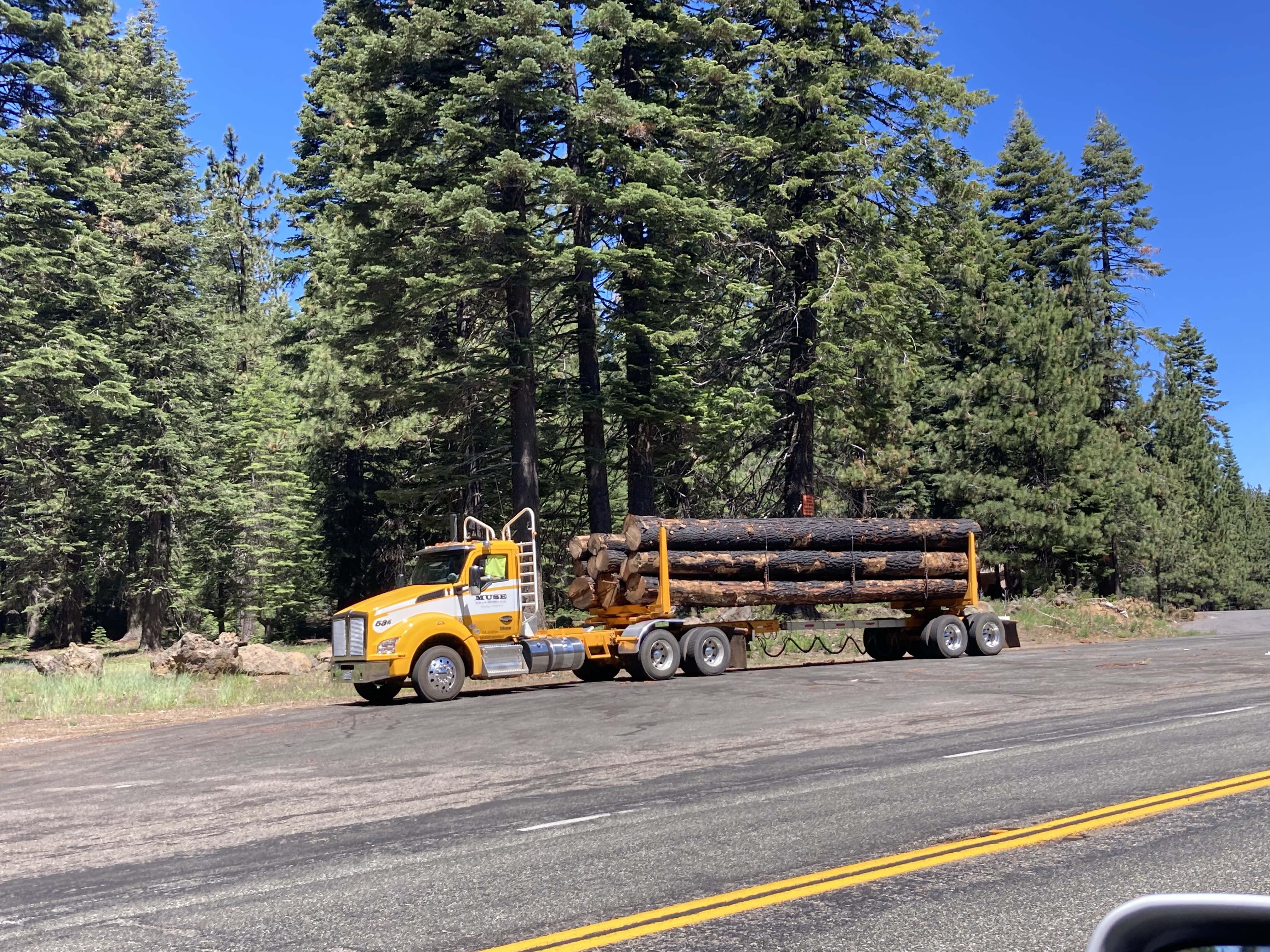Salvaging Timber
Contact
University of Arkansas System Division of Agriculture
Cooperative Extension Service
2301 S. University Ave.
Little Rock, AR 72204

Salvaging Timber
Over the past two decades, we’ve had a front-row seat to the effects climate change has imposed on forests across the western states. Wildfires, each seemingly worse than the year before, wreak havoc on forest land each summer and destroy millions of trees. My western tour this summer has included stretches of Northern California and Oregon where the fires have done tremendous damage and salvage crews are working frantically to remove the dead trees while they still can.
And there are a lot of logs to salvage. I sat in on a talk by a forest ecologist who had tracked the fire history of the district where she worked in central Oregon since the beginning of the fire suppression policy more than a century ago. During most of the decades, fires were small and consumed less than 5 percent of the forest in any one decade. But, since 2000, two enormous fires have each ravaged about 25 percent of the forest. Half of the forest burned in two decades.
Fire kills the trees but does not directly damage the wood quality of those with sound boles. Salvage operations begin soon after the fires are out and crews and equipment can be lined up to do the work. Because fire is an indiscriminate killer, all size classes and kinds of trees are destroyed. In a normal logging operation, crews selectively remove the kinds and sizes desired by the mills. The trucks I have seen rolling with burned logs are hauling the largest trees first, leaving behind lesser trees in stacks, or sometimes pushed into burn piles because there is not enough demand for the middling size trees.
Trees cut within the first year of a fire are usually the best and command a normal market price for the lumber produced. But the window of time is short, for after three years the wood cannot be salvaged.
The first problem to pop up with burned trees is a fungus disease called blue stain, which is spread by bark beetles. The fungus spores are carried to the tree by bark beetles that invade the sapwood of the tree. By the second season after the fire the blue stain has spread to the heartwood of the tree and, while the lumber produced from such trees is not significantly different than non-stained wood, it grades out lower and sells for a lower price.
In addition to the blue stain, the bark beetles tunnel through the wood and create pencil-sized galleries which impact both wood quality and price. In addition to the blue stain fungus, other wood rot fungi are introduced into the bole of the tree by the beetles. These fungi begin decaying the sapwood and then move into the heartwood of the tree. Beyond the third year, the wood rotters have invaded enough of the core of the tree that the wood is considered unfit for use as lumber.
Burned logs also present challenges during harvesting and milling. For the harvesting crews, a constant concern is the fine bits of charcoal that accumulate in hard-to-reach parts of their harvesting equipment and, if conditions are right, ignite and cause an equipment fire. In the mill this same charcoal coats the electronic eyes that direct the debarking and milling operations.
Are Arkansas forests as susceptible to fire as their western counterparts? So far we’ve been lucky in the east because of our 40-plus inches of annual rainfall and occasional summer rains. Much of the forest land in the west relies on a plentiful snowpack and some rain during the growing season to keep trees healthy and fires at bay. Global warming has reduced overall precipitation, with summertime rainfall hit especially hard.
A multi-year drought cycle is not out of the question. We’ve had them before. Two years in a row of drought probably won’t trigger fires in the east, but weather patterns that produce extreme drought for three or more years would be scary and a possible game changer. The pine forests of southern Arkansas, because of the flammable terpenes contained in the needles, would be more likely to burn than the hardwoods. But the oak forests of the Ozarks would not be immune to fire if conditions were severe enough.
